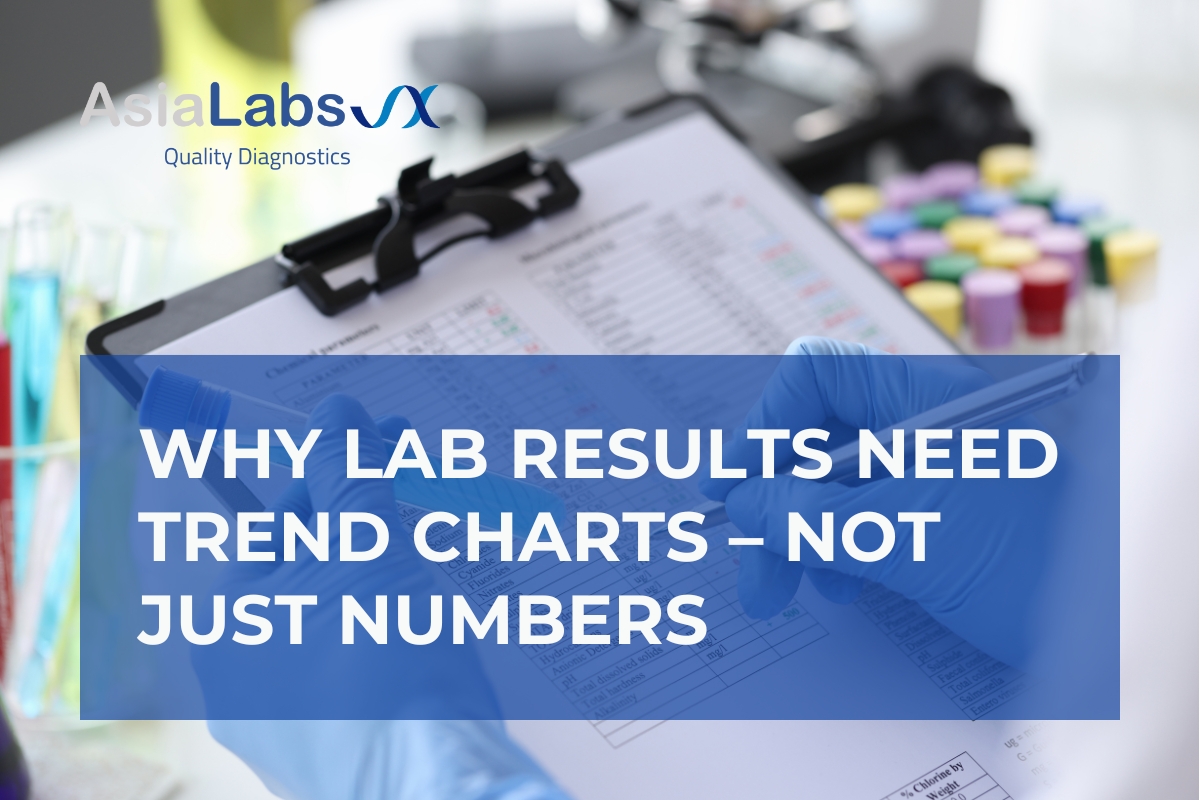When doctors receive lab results, they’re often presented as a list of isolated numbers: HbA1c 6.7%, GGT 58, LDL 3.9 mmol/L. These figures are important, but can a single number at one point in time truly guide accurate treatment decisions? The answer—especially when managing chronic conditions—is not really.
The Limitations of Single-Point Lab Values
In clinical practice, a lab value is rarely meaningful in isolation. Take, for example, an HbA1c result of 6.7%. Is this good or bad? The answer depends entirely on context. If the patient’s previous HbA1c was 8.1%, this is a significant improvement. If it was 5.9%, it signals deterioration. Without knowing the trend—whether the value is rising, falling, or stable—doctors are left to guess or rely on patient recall, which can be unreliable.
This challenge is not limited to diabetes. In chronic liver disease, a GGT of 58 could be a sign of improvement or worsening, depending on previous values. For patients with dyslipidemia, an LDL of 3.9 mmol/L might be a red flag or a step in the right direction, depending on the trajectory.
Why Trends Matter in Chronic Disease Management
Chronic diseases—like diabetes, cardiovascular disease, and liver disorders—are managed over months and years, not days. The goal is to track progress, catch early signs of deterioration, and adjust treatment before complications arise. This requires seeing the bigger picture, not just a snapshot.
Trend charts provide that bigger picture. By plotting key indicators—such as HbA1c, ALT, AST, GGT, LDL, and creatinine—over time, clinicians can easily see whether a patient’s condition is improving, worsening, or remaining stable. This visual representation offers several advantages:
-
Clarity: Trends reveal patterns that isolated numbers cannot. A gradual rise in creatinine, for example, may prompt early intervention before kidney function declines further.
-
Objectivity: Trend charts reduce the reliance on patient memory or subjective impressions, providing a data-backed foundation for clinical decisions.
-
Motivation: Patients are often more engaged and motivated when they can see their progress (or lack thereof) visually, rather than just hearing a number.
The AsiaLabs Advantage: Dynamic, Longitudinal Insights
At AsiaLabs, we recognize the critical importance of trends in chronic disease management. That’s why every lab report can include a 3-to-6-month trend chart for key health indicators. Instead of static PDFs with single-point values, clinicians receive dynamic, longitudinal insights.
Imagine a patient with type 2 diabetes. Over the past six months, their HbA1c has dropped from 8.1% to 7.4% to 6.7%. With a trend chart, the clinician can quickly see the positive trajectory and reinforce the patient’s efforts. Conversely, if the trend shows a creeping increase, it’s a prompt for timely intervention.
The same applies to liver function tests. A patient with chronic hepatitis may have fluctuating ALT and AST levels. A trend chart helps the doctor distinguish between a temporary spike and a sustained increase that requires further investigation.
Better Data, Better Decisions
When clinics partner with AsiaLabs, they gain access to tools that transform raw data into actionable insights. Trend charts are more than just a visual aid—they’re a clinical necessity in today’s data-driven healthcare environment.
-
Early Detection: Subtle changes over time are often the first sign of trouble. Trend charts make these changes obvious, enabling earlier and more effective interventions.
-
Personalized Care: Every patient is unique. Trends allow clinicians to tailor treatment plans based on individual progress, rather than applying a one-size-fits-all approach.
-
Enhanced Communication: Visual trends make it easier for clinicians to explain complex concepts to patients, fostering understanding and adherence.
The Future of Lab Reporting
Static, single-point lab results are quickly becoming outdated. In an era where chronic diseases are on the rise and personalized medicine is the goal, trend charts are essential. They turn numbers into narratives, helping clinicians and patients alike understand what’s really happening inside the body.
At AsiaLabs, we’re committed to empowering healthcare providers with the tools they need to deliver the best possible care. Our trend charts are more than just a feature—they’re a fundamental shift towards smarter, more effective medicine.
Lab results are not just about numbers—they’re about stories, progress, and, ultimately, better health outcomes. By embracing trend charts, clinicians can make more informed decisions, patients can stay more engaged, and everyone can work together towards better health. That’s the power of seeing the whole picture—not just a single point in time.

